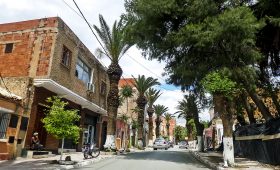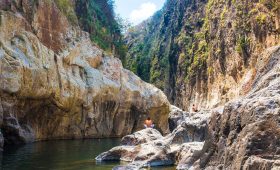About Manu National Park
Manu National Park in Peru is a vast expanse of natural beauty and biodiversity. Recognized as a UNESCO World Heritage Site, it spans 1.7 million hectares, making it one of the largest and most diverse national parks globally. Established as part of Peru’s national parks system in 1973, it became a UNESCO Biosphere Reserve in 1977 and a World Heritage Site in 1987.
Unique Features
Manu National Park offers a range of experiences for travelers. Here are some notable features:
- Biodiversity: The park is home to over 5,000 plant species, 1,000 bird species, and 200 mammal species, including jaguars, giant otters, and several monkey species. Birdwatchers will find a paradise with macaws, herons, and hawks.
- Zones of Access: The park is divided into three zones: the core zone, reserved for scientists; the reserved zone, accessible only through licensed tour operators; and the cultural zone, open to the public and home to local communities.
- Indigenous Communities: Indigenous groups, such as the Matsigenka, live within the park, offering visitors a chance to learn about their sustainable lifestyle and traditions.
- Varied Landscapes: From the Andes’ high-altitude grasslands and cloud forests to the Amazon’s tropical rainforests and riverine ecosystems, the park’s landscapes are diverse and stunning.
Best Time to Visit
The dry season, from May to October, is the ideal time to visit. The weather is more predictable, and wildlife is more active, enhancing the chances of spotting animals. However, the park is accessible year-round, with each season offering distinct experiences.
How to Get There
Reaching Manu National Park requires some planning:
- Arrive in Lima: Fly into Lima, Peru’s capital.
- Travel to Cusco: From Lima, take a domestic flight or bus to Cusco, the main gateway to the park.
- Choose Your Route: Options include guided tours or public transportation. Note that the Boca Manu airstrip is not operational in 2023.
- Enter the Park: Pay the entrance fee and register with park authorities upon arrival.
- Explore: Engage in guided tours, wildlife spotting, and hiking through designated trails.
Local Transportation
Transportation within the park is limited due to its remote location and conservation policies:
- Guided Tours: The most convenient way to explore, with experienced guides handling logistics and providing insights into the park’s ecosystems.
- Boat Rides: Rivers crisscross the park, and boat rides offer unique views and access to remote areas.
- Hiking: Many trails are accessible by foot, allowing for an immersive experience in the park’s natural beauty.
Accommodations
Several lodges and camps are available in the Manu area:
- Manu Wildlife Center: Offers clean cabins with hot water but no electricity. It’s an excellent spot for birdwatching and wildlife observation.
- Guadalupe Lodge: Accessible from Cusco by a 6-7 hour drive, featuring private cabins with electricity, hot showers, and Wi-Fi.
When booking, ensure you choose a licensed tour operator and inquire about all tour details, including accommodations, fees, and activities. Be cautious of foreign agencies that may charge high commissions.




